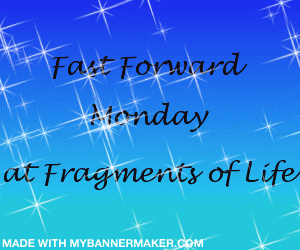Hello all, and thanks to Precious for the invite! Writing is obviously a passion of mine, and because of that, it’s never far from my thoughts. Having spent a not inconsiderable portion of my life jotting down story ideas on tram, bus and train tickets, old receipts, school handouts, scrap paper and, quite frequently, my own arms, I’ve developed the habit of keeping multiple notebooks in my bag at all times. The fact that I still inevitably resort to writing on myself and various bits of biro-friendly flotsam does not make this any less of a good idea, although it possibly suggests that I cannot be trusted to define terms like good idea without strict adult supervision. The point being, you are a gazelle, and inspiration is a leopard. It does not care that you have herd-related activities scheduled, such as grazing or pronking or playing video games, because it is hungry now, and no sooner have you looked away than it chases you across the savannah, grabs you by the throat and hauls your carcass up into the fork of a tree, to marinate at leisure.
Therefore, lesson one of writing: always have a pen.
Character names are important to me. At any given time, I have a list of favourites on hand culled from baby books, random name generators and daily life. Last names are harder; I don’t want to make them up, but I generally want something more original than Smith, Jones or Wright, which is why they have a special notebook all their own. Solace began as just a name I liked, as do most of my characters: once I know what they’re called, I find it that much easier to figure out who they are. From there, I start to get an idea of the world they inhabit – modern or magical, cruel or kind – and then a story starts to come together. These early ideas are simple, centred on a single person, but as I generate more and more people, hoarding them away like winter acorns, the greater the chance that a particular few will suddenly stand out as belonging to the same world. From their personalities and likely interactions, I go on to configure my plots, hunting out the narrative arc that ties them all together.
Thus, lesson the second: know what methods work for you.
Of course, while the above pattern describes how I’ve put together the majority of schemes and fables lurking in the vast wilderness that is my Documents folder, it doesn’t fit with how I wrote Solace & Grief. In that case, the opening prologue leapt into my head, leopard-like (see lesson one) and literally refused to let go until I’d well and truly done something about it. Solace had a name at the start, but none of her companions did; they popped up as the story dictated, flowing together and drifting apart as I decided, through the course of writing the first draft, who was most important to the plot. I’ve written stories before where one or two characters appeared that way, and it’s always been a good thing – spontaneity is, after all, the kissing cousin of creativity. But Solace & Grief marked the first occasion where virtually the entire cast came to life via a meandering process of elimination, favouritism and plain ole’ narrative Darwinism. It was a little awesome, and a little scary, because it was outside my Zone of Familiarity. But, in the end, it worked. I’ve come away a stronger writer for letting this particular story tell me where it was headed, rather than trying to put a bridle on it, and that is a satisfying outcome.
Lesson the third might seem like a contradiction of lesson the second, but really, it’s more of a rider: don’t be afraid to try new things.
Right now, I’m seriously mired in the gumboot-devouring quagmire that is the Third Act of Book Two, being The Key to Starveldt. I am so. Completely. Sick. Of trying to write. This recalcitrant story. If it was a person? I would stab it in the face, because hypothetical Stabbity Death as a means of anger management has long formed part of my personal mission statement. I have deleted scenes, replaced them with new ones, deleted those, chopped both sets together to form a seamless patchwork of double-deleted wrongness, and am in all respects on the brink of flinging my laptop into a fiery volcano – or at least, I would be, if we lived near a volcano, and I hadn’t just paid the damn thing off (the laptop, not the volcano we don’t have), and anyway, all my KOTOR saves are on here. It is hard work, and often agonising. But I love my characters. I know where they’re headed next. (No, I’m not telling. Not yet, anyway.) I want to see them get there. And if that means I have to sweat metaphoric blood, or possibly actual blood, to do it, then I will.
Which brings me to the fourth and final lesson of this particular Fozrant, viz: despite appearances, writing can be hard.
But it is also – spectacularly, gloriously, impossibly – rewarding. It is the music of glyphs and the stampede-song of consciousness. I wouldn’t be without it for all the Crazy in CrazyTown.
And, as you’ve probably guessed by now, that’s saying a quite lot.
_______________________________________________________
Thanks for sharing about your four rules Foz! I strictly follow rule # 1! I even have a handy notebook to scribble ideas in.
Check out her new book:
The Rare: Solace & Grief
Release Date: March 1, 2010 (*edited.sorry!)
Book Description:
Solace Morgan was born a vampire. Raised in foster care, she has always tried to keep her abilities secret, until an eerie encounter with a faceless man prompts her to run away. Finding others with similar gifts, Solace soon becomes caught up in a strange, more vibrant world than she ever knew existed. But when the mysterious Professor Lukin takes an interest in her friends, she is forced to start asking questions of her own. What happened to her parents? Who is Sharpsoft? And since when has there been a medieval dungeon under Hyde Park?











































![Validate my Atom 1.0 feed [Valid Atom 1.0]](valid-atom.png)